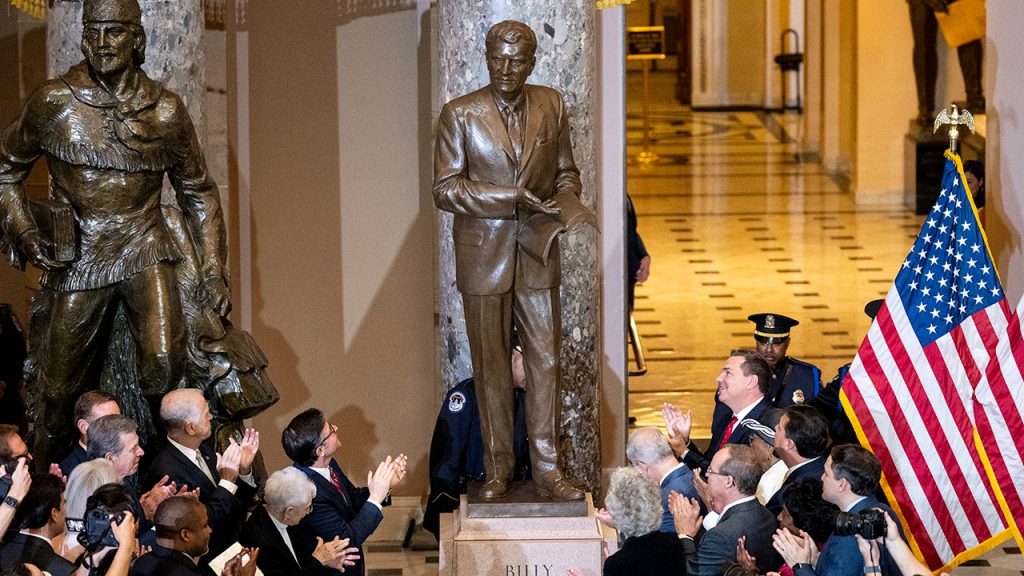A new seven-foot bronze statue of Billy Graham was recently unveiled in the U.S. Capitol. The statue, one of two from North Carolina, replaced a statue of the late Governor Charles Aycock. Graham’s likeness was initially placed in a highly trafficked area of Statuary Hall near the House chamber, where lawmakers would pass by frequently. However, after the unveiling ceremony, the workers moved Graham to a different location in the Crypt of the Capitol, which receives fewer visitors but is part of formal Capitol tours.
The statue of Billy Graham was heavily wrapped in plastic and padding initially, making it difficult to discern his features. Graham’s statue is positioned near that of Marcus Whitman from Washington state, who also holds a Bible and is known for his missionary work during the 19th century. Graham was eventually relocated to the north side of the Capitol, next to statues of Roger Sherman from Connecticut and John C. Calhoun from South Carolina. The statues in the Capitol collection have their feet cast in bronze but are often moved to different locations.
The U.S. Capitol has been making changes to its statue collection over the years, with 17 statues exchanged since 2000. Arkansas recently replaced two statues, one with civil rights leader Daisy Bates and the other with musician Johnny Cash. Cash’s statue will be placed in the Capitol Visitor’s Center, the main entry point for tourists visiting the Capitol. These changes reflect a desire to diversify the representation in the Capitol’s collection and honor individuals who have made significant contributions to American history.
The dedication ceremony for Billy Graham’s statue was attended by lawmakers who praised his legacy of faith, ethics, and decency. While Graham’s son, Franklin Graham, expressed some discomfort with the statue’s presence, citing his father’s focus on spreading the message of faith rather than receiving accolades. The statues in the Capitol collection serve as a reminder of the individuals who have shaped the nation’s history and continue to inspire visitors from around the country.
The process of unveiling and relocating statues in the U.S. Capitol involves workers who meticulously prepare and position the statues in various locations. The dedication ceremonies for these statues are elaborate events attended by lawmakers and officials who honor the legacy and contributions of the individuals being represented. The placement of these statues in different areas of the Capitol ensures that visitors have the opportunity to learn about and reflect on the diverse figures who have influenced American history. As the Capitol continues to evolve, new statues are added to the collection, representing the nation’s ongoing commitment to recognizing individuals who have made a significant impact.


